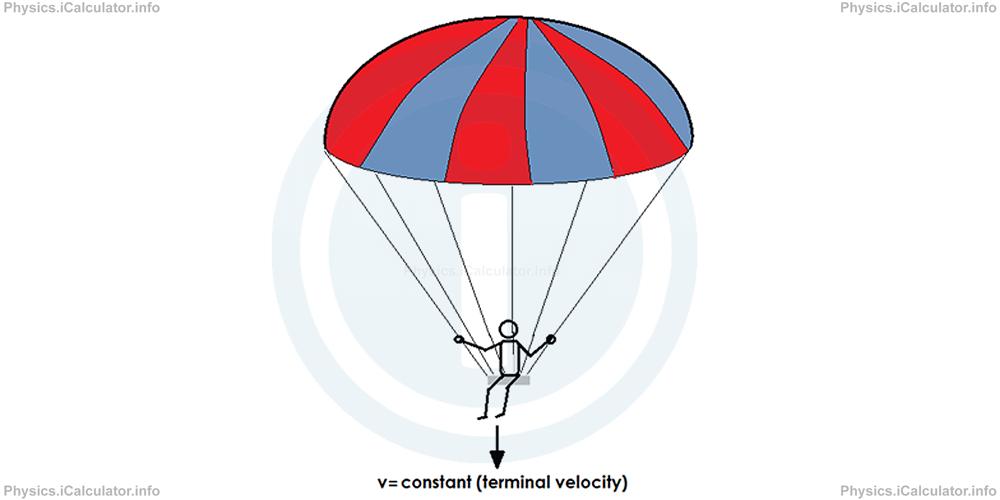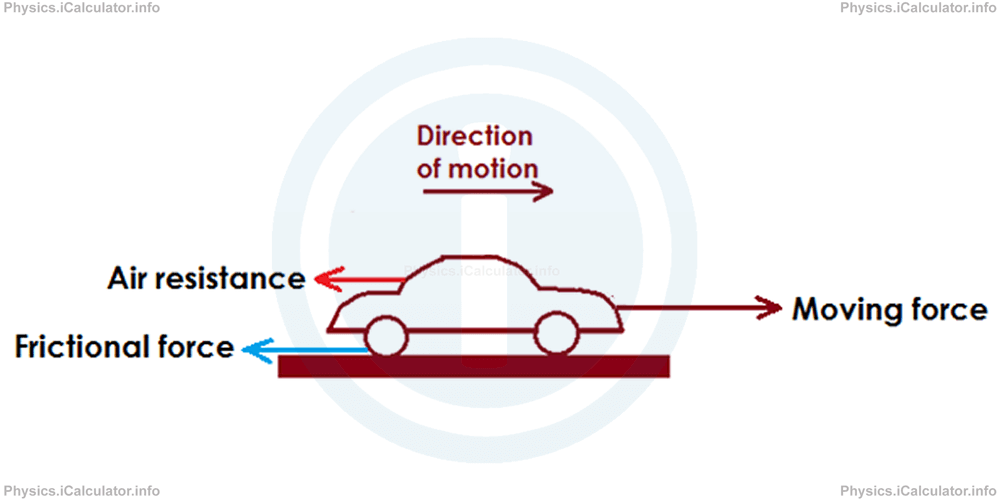Menu
Physics Lesson 4.3.3 - Frictional Force and Drag Acting Simultaneously at the Same Object. Terminal Velocity.
Please provide a rating, it takes seconds and helps us to keep this resource free for all to use
Welcome to our Physics lesson on Frictional Force and Drag Acting Simultaneously at the Same Object. Terminal Velocity., this is the third lesson of our suite of physics lessons covering the topic of Types of Forces II. Resistive Forces (Frictional Force. Drag). Terminal Velocity, you can find links to the other lessons within this tutorial and access additional physics learning resources below this lesson.
Frictional Force and Drag Acting Simultaneously at the Same Object. Terminal Velocity.
When an object is at rest, there is neither frictional force nor drag produced. When the object starts moving, the frictional force is the first resistive force that appears in the process. When objects move at low velocities, the air drag is negligible. It becomes considerable only when the velocity increases at certain values that create air currents in the opposite direction of motion. In this regard, we can say that frictional force has a fixed value that depends only on the surfaces roughness and the object's weight, while drag is variable, depending of the moving velocity.
When air drag (resistance) reaches such a value that when added to the frictional force they balance the moving force, the object cannot speed up anymore. It continues to move at constant velocity - the value of the last velocity before the equilibrium was reached. This constant velocity produced when moving force equals the sum of frictional force and drag, is known as "terminal velocity." It depends on the mass and the surface of object.
For example, a parachute falls down at low terminal velocity because it has a large surface. As a result, it blocks more air during its way and falls down slower than a free falling human. Therefore, parachute is considered as an important life-saver.

Example 2
The engine of a 1200 kg car produces 8000N moving (driving) force. The friction coefficient between the car's tires and the asphalt is 0.6. What is the air resistance if the car is moving at terminal velocity?
Solution 2
The situation is described in the figure below.

If we denote the air resistance (drag) by D⃗ and the moving force by F⃗, then the equation to be used in this case is:
Rearranging, we obtain
= F⃗ - μ × m × g⃗
= 8000 N - 0.6 × 1200 kg × 9.81 N/kg
= 8000 N - 7063.2 N
= 936.8 N
You have reached the end of Physics lesson 4.3.3 Frictional Force and Drag Acting Simultaneously at the Same Object. Terminal Velocity.. There are 3 lessons in this physics tutorial covering Types of Forces II. Resistive Forces (Frictional Force. Drag). Terminal Velocity, you can access all the lessons from this tutorial below.
More Types of Forces II. Resistive Forces (Frictional Force. Drag). Terminal Velocity Lessons and Learning Resources
Whats next?
Enjoy the "Frictional Force and Drag Acting Simultaneously at the Same Object. Terminal Velocity." physics lesson? People who liked the "Types of Forces II. Resistive Forces (Frictional Force. Drag). Terminal Velocity lesson found the following resources useful:
- Friction Feedback. Helps other - Leave a rating for this friction (see below)
- Dynamics Physics tutorial: Types of Forces II. Resistive Forces (Frictional Force. Drag). Terminal Velocity. Read the Types of Forces II. Resistive Forces (Frictional Force. Drag). Terminal Velocity physics tutorial and build your physics knowledge of Dynamics
- Dynamics Revision Notes: Types of Forces II. Resistive Forces (Frictional Force. Drag). Terminal Velocity. Print the notes so you can revise the key points covered in the physics tutorial for Types of Forces II. Resistive Forces (Frictional Force. Drag). Terminal Velocity
- Dynamics Practice Questions: Types of Forces II. Resistive Forces (Frictional Force. Drag). Terminal Velocity. Test and improve your knowledge of Types of Forces II. Resistive Forces (Frictional Force. Drag). Terminal Velocity with example questins and answers
- Check your calculations for Dynamics questions with our excellent Dynamics calculators which contain full equations and calculations clearly displayed line by line. See the Dynamics Calculators by iCalculator™ below.
- Continuing learning dynamics - read our next physics tutorial: Types of Forces III (Elastic Force and Tension)
Help others Learning Physics just like you
Please provide a rating, it takes seconds and helps us to keep this resource free for all to use
We hope you found this Physics lesson "Types of Forces II. Resistive Forces (Frictional Force. Drag). Terminal Velocity" useful. If you did it would be great if you could spare the time to rate this physics lesson (simply click on the number of stars that match your assessment of this physics learning aide) and/or share on social media, this helps us identify popular tutorials and calculators and expand our free learning resources to support our users around the world have free access to expand their knowledge of physics and other disciplines.